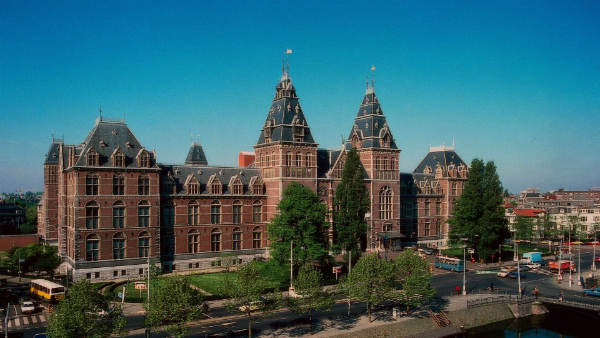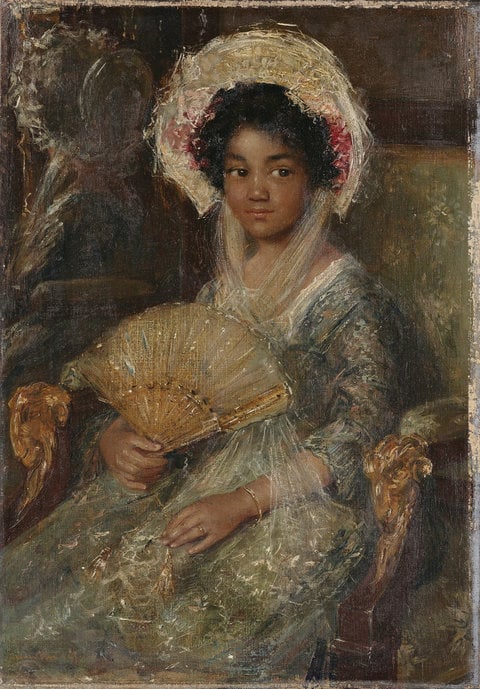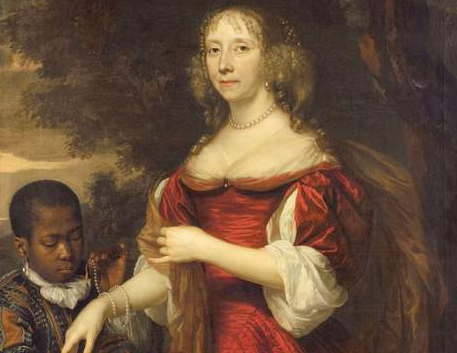Art World
The Rijksmuseum Removes ‘Racially Charged’ Language from Its Collection
Some have complained that the changes eradicate historical contexts.

Photo via: Youtube
Some have complained that the changes eradicate historical contexts.

Amah-Rose Abrams

The Rijksmuseum in Amsterdam is in the process of removing any language that could be considered as “racially charged” or offensive from the titles and descriptions of the artworks in its collection.
The project has been underway at the museum for some time, but staff in the history department, led by Martine Gosselink, has been working in earnest on the list of works to be changed for around a month, removing words like “negro” and “dwarf.”
For example, the title of a painting by Simon Maris (circa 1900) has been changed from Young Negro Girl to Young Girl Holding Fan.

Simon Maris’s Young Negro-Girl, now Young Girl Holding a Fan (c.1900).
Photo: Courtesy the Rijksmuseum
“The point is not to use names given by whites to others,” Gosselink told the New York Times. “We Dutch are called kaas kops, or cheeseheads, sometimes, and we wouldn’t like it if we went to a museum in another country and saw descriptions of images of us as ‘kaas kop woman with kaas kop child,’ and that’s exactly the same as what’s happening here,” she explained.
Labels for the 8,000 artworks were updated in 2013, when the museum re-opened to the public after an extensive renovation, but some titles are still under dispute. One such work is The Bath of Bathsheba (1594) by Cornelis van Haarlem, which is described as “exotic” due to the presence of a black handmaid.
“Our main concern is to get rid of the insulting descriptions online,” added Gosselink. “Until now we’ve found 132 descriptions with the word ‘negro’ in them, and it’s quite easy to change that. But there are other words like Hottentot—it’s a name given by Dutch people to the Khoi people in South Africa, and a Dutch word that means ‘stutterer.’ It’s very insulting, and it’s really important to change that as soon as possible.’’

Margaretha van Raephorst’s Negro Servant has become Young Black Servant.
Photo: Courtesy the Rijksmuseum.
There has been a mixed response to the enterprise, as some people feel that by changing the titles of works the historical contexts of the works are being eradicated. Others have complained of political correctness. However, Raphael Roig, senior programs officer and permanent secretary of the ethics committee of the International Council of Museums, feels that this is progress.
“We’ve had complaints about specific objects or exhibitions being offensive, but to my knowledge, this is the first time we’re facing a debate with regards to the titles and the descriptions,” Roig told the NYT. “We are very supportive toward the Rijksmuseum’s decision.”
“The key is finding the balance between responding to the sensitivities of the represented communities and safeguarding of history,” Roig added. “It’s a very tricky balance, in my opinion.”
The museum holds a collection of 1.1 million works, a quarter of which have been digitized. So far, 200 titles or descriptions have been found to contain insulting language and changed.